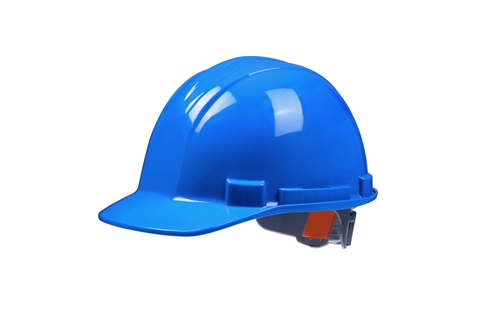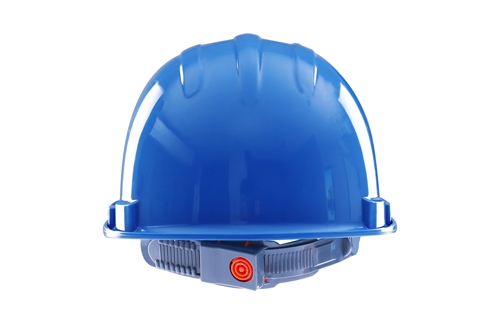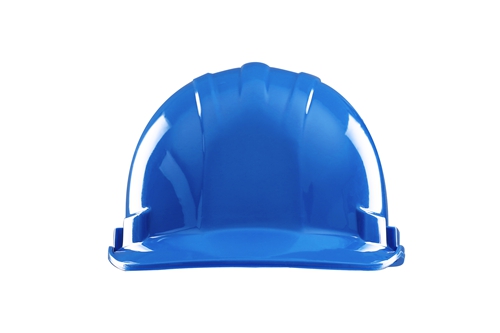HDPE Safety Helmet: Durable Head Protection for Work Sites
Industry Trends in Head Protection Technology
The global market for industrial protective headwear is undergoing significant evolution, driven by more stringent safety regulations, advancements in material science, and increasing demand from developing economies. As of 2023, the market size is estimated to be over $3 billion, with a projected CAGR of 5-7% over the next five years. Key trends include the integration of smart technologies (e.g., IoT sensors for impact detection or vital sign monitoring), enhanced comfort features, and a greater emphasis on sustainable and recyclable materials. The shift towards lightweight yet highly protective materials like High-Density Polyethylene (HDPE) is particularly notable, addressing the need for both robust protection and reduced wearer fatigue. Furthermore, customization options, such as OEM printing and personalized fit systems, are becoming standard requirements in professional sectors. The demand for specialized helmets for specific risks, such as high-temperature environments or electrical hazards, is also expanding, pushing manufacturers to innovate beyond conventional designs.
Compliance with international standards like ANSI Z89.1 and EN 397 remains paramount, with continuous updates reflecting new research in impact dynamics and wearer protection. The adoption of advanced manufacturing processes ensures consistent quality and performance, making the modern hdpe safety helmet an indispensable tool in high-risk environments.
Manufacturing Process of HDPE Safety Helmets
The production of a high-quality hdpe safety helmet involves a precise, multi-stage manufacturing process designed to ensure structural integrity, ergonomic comfort, and adherence to rigorous safety standards. The primary material, High-Density Polyethylene (HDPE), is chosen for its excellent strength-to-density ratio, impact resistance, and chemical inertness.
Process Flow:
- Material Preparation: High-grade HDPE pellets, often with UV stabilizers and colorants, are meticulously selected and prepared. These additives are crucial for extending the helmet's service life, especially in outdoor environments, by preventing material degradation from sunlight exposure.
- Injection Molding: The prepared HDPE pellets are fed into an injection molding machine. The material is heated until molten and then injected under high pressure into a precision-engineered mold cavity. This casting process forms the helmet shell, ensuring uniform wall thickness and structural consistency. The mold design is critical for achieving the specific shape required for impact distribution and ventilation.
- Cooling and Ejection: After injection, the molten HDPE cools rapidly within the mold, solidifying into the helmet shell. Once sufficiently rigid, the mold opens, and the shell is automatically ejected. Controlled cooling parameters prevent warping and internal stresses.
- Trimming and Finishing: Excess material (flash) from the molding process is carefully trimmed. Edges are smoothed to remove any sharp points, ensuring user comfort and preventing snags. Ventilation holes, if part of the design, are precisely punched or drilled.
- Suspension System Assembly: The internal suspension system, which typically includes a head harness, sweatband, and adjustable ratchet mechanism, is assembled and integrated into the helmet shell. This system is crucial for absorbing impact energy, distributing weight, and providing a secure, comfortable fit. The suspension system often incorporates textile straps or plastic webbing for flexibility and comfort.
- Accessory Integration: Depending on the helmet's intended use, slots for accessories like earmuffs, face shields, or headlamps are added. For customized solutions, OEM printing of company logos or safety instructions is performed using durable, fade-resistant methods.
- Quality Control and Testing: Each batch undergoes rigorous testing to ensure compliance with international standards such as ANSI Z89.1 (Type I, Class E, G, or C), EN 397, and ISO 3873. Tests include impact resistance (vertical and lateral), penetration resistance, flammability, and electrical insulation (for Class E and G helmets). Visual inspections for defects and functional checks of the suspension system are also performed.
- Packaging: Approved helmets are cleaned, individually packaged, and prepared for distribution.
This intricate process ensures that every engineering safety helmet not only meets but often exceeds the demanding requirements of various industries, providing reliable head protection for workers.

High-Density Polyethylene (HDPE) pellets ready for injection molding.
Technical Specifications and Performance Metrics
The efficacy of a head safety helmet is quantified by its adherence to strict technical specifications and its performance across various critical tests. HDPE helmets are specifically engineered to provide superior protection against common industrial hazards, demonstrating excellent characteristics across a range of parameters.
Product Specification Table: HDPE Safety Helmet with ANSI Compliance
These specifications highlight the robust engineering behind a compliant blue safety helmet, ensuring that it provides reliable protection in demanding industrial environments.
Application Scenarios and Industry Use Cases
The versatility and protective capabilities of the hdpe safety helmet make it an essential piece of Personal Protective Equipment (PPE) across a multitude of high-risk industries. Its design is tailored to protect against common hazards such as falling objects, impacts, electrical shocks, and chemical splashes.
Target Industries:
- Construction: From large-scale infrastructure projects to residential building sites, workers face constant risks from dropped tools, scaffolding collapses, and vehicle movements. HDPE helmets provide crucial impact protection.
- Petrochemical and Oil & Gas: In environments prone to chemical exposure, potential explosions, and heavy machinery operations, the corrosion resistance and electrical insulation properties of HDPE are paramount.
- Mining: Underground and open-pit mining operations present hazards such as falling rocks, confined spaces, and heavy equipment. Helmets with lamp attachment points and high visibility are critical.
- Utilities (Water Supply & Drainage, Electrical Grids): Workers in these sectors often encounter confined spaces, potential for falling debris, and live electrical components. Class E rated HDPE helmets offer vital electrical protection.
- Manufacturing and Industrial Plants: Factories and industrial sites, especially those with overhead cranes or automated machinery, require robust head protection against impacts and minor splashes.
- Metallurgy and Heavy Engineering: Environments with extreme heat, molten metal splashes, and heavy equipment necessitate helmets designed for durability and resistance to harsh conditions.

Workers demonstrating the use of safety helmets in a construction environment.
Technical Advantages of HDPE Safety Helmets
Choosing an hdpe safety helmet offers distinct technical advantages over other materials, making it a preferred option for demanding industrial applications:
- Superior Impact Resistance: HDPE exhibits excellent energy absorption capabilities. Its molecular structure allows it to deform under impact and then return to its original shape, effectively dissipating kinetic energy and reducing the force transmitted to the wearer's head.
- Lightweight Design: Despite its strength, HDPE is a relatively low-density material. This translates to lighter helmets, significantly reducing wearer fatigue during long shifts without compromising protection. This ergonomic advantage directly contributes to worker comfort and compliance.
- Chemical and Corrosion Resistance: HDPE is largely inert to a wide range of chemicals, acids, and bases. This makes it ideal for environments in petrochemicals, chemical processing, and wastewater treatment, where exposure to corrosive substances is a constant threat. This property ensures a longer service life in harsh conditions compared to less resistant materials.
- Dielectric Strength (Electrical Insulation): Many HDPE helmets are designed to meet Class E (Electrical) requirements of ANSI Z89.1, providing significant protection against electrical hazards up to 20,000 volts. This is critical for electricians, utility workers, and anyone working near energized conductors.
- UV Stabilization: Modern HDPE formulations include UV stabilizers that prevent degradation from prolonged sun exposure, crucial for outdoor workers. This enhances the helmet's durability and maintains its protective properties over its service life, preventing material embrittlement and cracking.
- Temperature Performance: HDPE helmets maintain their structural integrity and protective qualities across a broad temperature range, from extreme cold (-30°C) to high heat (+50°C), making them suitable for diverse climatic conditions.
- Cost-Effectiveness and Recyclability: HDPE is a readily available and cost-efficient material, making these helmets economically viable for large-scale procurement. Furthermore, HDPE is fully recyclable, aligning with increasing corporate sustainability initiatives and contributing to reduced environmental impact.
These combined attributes make the buy safety helmet an intelligent investment for companies prioritizing both worker safety and operational efficiency.
Vendor Comparison and Selection Criteria
When selecting a supplier for hdpe safety helmet solutions, B2B decision-makers must consider several critical factors beyond just initial cost. A comprehensive vendor evaluation ensures long-term reliability, compliance, and overall value. The choice of vendor directly impacts worker safety and regulatory adherence.
Key Comparison Metrics:
- Certifications and Compliance: Verify that the vendor's products hold current certifications (e.g., ANSI Z89.1-2014, EN 397:2012, CSA Z94.1) from accredited testing bodies. ISO 9001 certification for quality management systems is also a strong indicator of reliable manufacturing processes.
- Material Quality and Sourcing: Inquire about the grade of HDPE used and the consistency of material sourcing. Premium virgin HDPE ensures optimal performance and durability.
- Manufacturing Capabilities: Assess the vendor's ability to maintain high production standards, including precision injection molding, consistent quality control, and robust assembly lines. Site visits or detailed process documentation can be beneficial.
- Customization Services (OEM Printing): For branding and identification, evaluate the vendor's capabilities for OEM printing, including print quality, durability, and minimum order quantities. A vendor offering personalized construction engineering helmet solutions is highly advantageous.
- Product Range and Accessories: A broad range of helmet types (vented, non-vented, Class C/G/E) and compatible accessories (face shields, earmuffs, chin straps) indicates a comprehensive solution provider.
- Lead Times and Logistics: Evaluate the vendor's ability to meet required delivery schedules and their logistical efficiency, especially for large or recurring orders.
- Warranty and After-Sales Support: Understand the warranty period, replacement policies, and the availability of technical support for product inquiries or issues.
- Industry Experience and Reputation: A vendor with a long track record and positive client testimonials in your specific industry sector demonstrates expertise and reliability.
By thoroughly evaluating these aspects, organizations can secure a partnership that provides superior head protection solutions, contributing to a safer and more efficient workforce.
Customized Solutions: OEM Printing and Personalization
In today's competitive industrial landscape, customized PPE not only enhances safety through clear identification but also reinforces corporate branding and team cohesion. For a blue safety helmet, OEM printing and personalization options are crucial for many enterprises.
Advantages of Customization:
- Brand Reinforcement: Displaying company logos, slogans, or specific project branding on safety helmets creates a consistent professional image across the workforce. This is particularly valuable for large contractors or companies with multiple sites.
- Role Identification: Different colors or specific markings can denote various departments, roles, or visitor status, improving on-site communication and emergency response efficiency. For example, a yellow helmet for general workers and a blue safety helmet for supervisors.
- Compliance and Safety Messaging: Essential safety warnings, certification marks, or even individual employee identification can be permanently printed, ensuring critical information is always visible.
- Theft Deterrence: Personalized helmets are less likely to be misplaced or stolen, as they are uniquely identifiable to an individual or company.
- Enhanced Professionalism: A uniform appearance with branded PPE conveys a strong commitment to safety and professionalism to clients and the public.
Leading manufacturers offer high-quality printing techniques, such as pad printing or durable decal application, that ensure logos and markings withstand harsh industrial conditions without fading or peeling. These services often come with design consultation to ensure optimal placement and visibility while maintaining helmet integrity.

Customized HDPE safety helmets with OEM printing for corporate branding.
Application Case Studies: HDPE Helmet in Action
Case Study 1: Large-Scale Infrastructure Project
A major infrastructure firm, constructing a new metropolitan bridge, mandated the use of ANSI Z89.1 Type I, Class E hdpe safety helmet for all personnel. The project involved working at heights, heavy crane operations, and close proximity to live electrical lines. Over an 18-month period, the helmets proved invaluable. In one incident, a dropped wrench from a height of 10 meters struck a worker's helmet. The HDPE shell, combined with the robust suspension system, effectively absorbed the impact, preventing serious head injury. Furthermore, the Class E rating provided critical protection for electrical teams working on lighting and control systems, ensuring their safety from accidental electrical contact. The project manager reported a significant reduction in head injury incidents compared to previous projects where less standardized head protection was used, attributing the improvement to the superior impact and electrical protection of the HDPE helmets.
Case Study 2: Petrochemical Plant Maintenance
During a scheduled turnaround at a large petrochemical refinery, maintenance crews were exposed to environments with potential for chemical splashes and corrosive fumes. The facility opted for custom-branded hdpe safety helmet solutions, with each department's logo printed on their helmets for clear identification. The inherent chemical resistance of the HDPE material ensured the helmets maintained their structural integrity and appearance even after exposure to various industrial solvents and acidic atmospheres. The lightweight nature of the helmets also contributed to improved worker comfort in high-temperature conditions, reducing instances of workers removing their PPE due to discomfort. The plant's safety audit indicated that the use of HDPE helmets contributed to zero recordable head injuries related to chemical exposure or minor impacts during the complex maintenance operation, reinforcing their choice for high-performance PPE.
Frequently Asked Questions (FAQ)
Q: What is the recommended service life for an HDPE safety helmet?
A: Generally, an hdpe safety helmet has a recommended service life of up to 5 years from the manufacturing date, or 3 years from the date of first use. However, this can vary based on the manufacturer's guidelines, storage conditions, frequency of use, and exposure to harsh environments. Always inspect your helmet before each use for signs of damage or degradation.
Q: Can I customize my HDPE safety helmet with company logos?
A: Yes, most reputable suppliers offer OEM printing and personalization services. This allows for the addition of company logos, employee names, or specific safety messages. It's crucial to ensure that any customization is performed by the manufacturer or an approved vendor to maintain the helmet's structural integrity and warranty.
Q: What is the difference between ANSI Type I and Type II helmets?
A: ANSI Type I helmets (like typical engineering safety helmet models) are designed to reduce the force of impact from blows to the top of the head. ANSI Type II helmets are designed to reduce the force of impact from blows to the top, front, back, and sides of the head. The choice depends on the specific hazards present in the work environment.
Q: How should HDPE safety helmets be stored?
A: Helmets should be stored in a clean, dry, and cool environment, away from direct sunlight, extreme temperatures, and chemical fumes. Improper storage can degrade the material and compromise its protective qualities.
Q: What are the lead times for large orders and available warranties?
A: Lead times for large orders of hdpe safety helmets typically range from 2-6 weeks, depending on order volume, customization requirements, and current production schedules. We recommend contacting our sales team for precise lead time estimates. Our products come with a standard 1-year warranty against manufacturing defects, ensuring peace of mind for our clients. We are committed to providing robust after-sales support, including technical assistance, replacement parts, and guidance on product care and maintenance. Our dedicated customer service team is available to address any inquiries or support needs promptly and professionally.
References
- ANSI/ISEA Z89.1-2014, American National Standard for Industrial Head Protection. Industrial Safety Equipment Association (ISEA).
- EN 397:2012+A1:2012, Industrial safety helmets. European Committee for Standardization (CEN).
- ISO 9001:2015, Quality management systems – Requirements. International Organization for Standardization (ISO).
- The Freedonia Group. "World Safety Equipment." Industry Study. 2023.
- Occupational Safety and Health Administration (OSHA). "Personal Protective Equipment - Head Protection." OSHA Publication 3151.
-
Women's Safety Clothing Canada | Hi-Vis & Durable Gear
NewsAug.27,2025
-
Durable Safety Helmet Hats: Ultimate Head Protection & Comfort
NewsAug.26,2025
-
HDPE Safety Helmet: Durable Head Protection for Work Sites
NewsAug.25,2025
-
Stylish Baseball Cap Safety Helmet | Discreet Head Protection
NewsAug.24,2025
-
Durable Waterproof Safety Clothing | Custom & High-Vis Protection
NewsAug.23,2025
-
Premium Reflective Safety Clothing | High-Vis Workwear
NewsAug.22,2025
